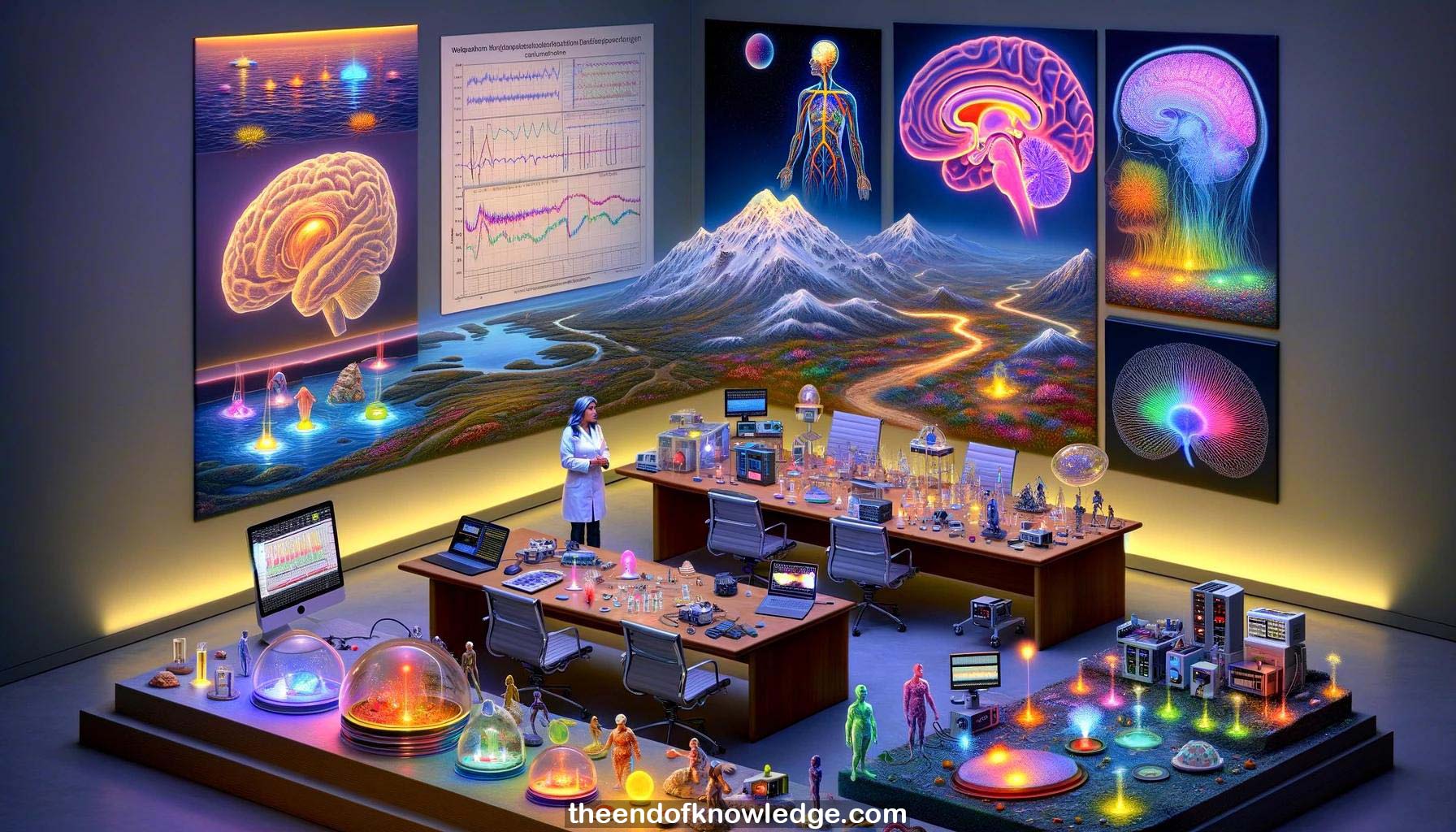 >
>
Concept Graph & Resume using Claude 3 Opus | Chat GPT4 | Llama 3:
Resume:
1.- Maria Antonia Piedrahita from gTech Colombia presents on wireless EEG and fNIRS recordings.
2.- fNIRS is a non-invasive neuroimaging technique using near-infrared light to measure changes in oxygenated and deoxygenated hemoglobin concentrations.
3.- Neurovascular coupling, chromophores of interest (HBO and HBR), and biological tissue properties are important for understanding fNIRS.
4.- Neuronal activity increases blood flow and HBO concentration in active brain regions due to neurovascular coupling.
5.- HBO and HBR have different absorption spectra in the near-infrared range; biological tissue is relatively transparent to this light.
6.- fNIRS uses sources and detectors placed on the scalp; channels are created with one source and one detector.
7.- Short separation channels measure superficial layers; long separation channels measure deeper cortical activity.
8.- Continuous wave fNIRS illuminates tissue and measures transmitted light intensity, which is converted to concentration using the modified Beer-Lambert law.
9.- The measured fNIRS signal contains the hemodynamic response and other physiological noise components like cardiac pulsations and respiration.
10.- The average HBO response shows an initial dip, peak around 8 seconds, then returns to baseline; HBR decreases or stays constant.
11.- Combining EEG and fNIRS provides complementary information, improved spatiotemporal resolution, and can enhance brain-computer interfaces.
12.- Three wireless EEG/fNIRS systems are presented: g.Nautilus with g.HIamp/NIRx NIRSport2, g.Nautilus with Artinis Brite, integrated with respective software.
13.- Experiment setup: motor execution paradigm with right-hand grasping; 32 EEG electrodes and 8 fNIRS channels over the motor cortex.
14.- Data is recorded using each system's acquisition software, synchronized via Lab Streaming Layer (LSL) for real-time visualization and analysis.
15.- Signal quality is checked for EEG (impedance, noise, alpha waves) and fNIRS (channel quality, scalp coupling) before starting the experiment.
16.- The experimental paradigm alternates between rest and task periods, with visual cues indicating when to perform hand grasping.
17.- Real-time data visualization in MATLAB/Simulink allows monitoring of EEG and fNIRS signals, triggering, filtering, and averaging.
18.- Offline analysis in MATLAB with custom scripts or gHiSys Analyze processes EEG (filtering, triggering, ERD/ERS) and fNIRS (filtering, triggering, averaging) data.
19.- fNIRS results show increased HBO and decreased HBR in contralateral motor cortex channels during right-hand grasping.
20.- EEG time-frequency analysis reveals event-related desynchronization (ERD) in motor cortex electrodes during hand grasping.
21.- Combining EEG and fNIRS leverages their complementary strengths: high temporal resolution of EEG and better spatial localization of fNIRS.
22.- Challenges with fNIRS include hair obstruction and signal attenuation in darker skin; techniques like hair thinning and spring-loaded optodes can help.
23.- Neurotech is still emerging in Colombia and Latin America, with potential for growth and impact on neurological and mental health applications.
24.- Typical fNIRS paradigms use a 10-second baseline and 20-25 second post-stimulus window to capture the slower hemodynamic response.
25.- Common fNIRS artifacts include cardiac pulsation, respiration, Mayer waves, blood pressure changes, and motion; short separation channels can help remove them.
26.- This live demo, despite suboptimal conditions, showcases the potential and challenges of real-world EEG/fNIRS experiments.
27.- Future directions include improving signal quality, developing robust analysis methods, and expanding applications in basic and clinical neuroscience.
28.- Open questions remain about optimal paradigm design, artifact removal, and interpretation of neurovascular coupling in various populations and conditions.
29.- Collaborative efforts between researchers, clinicians, and industry partners can advance the field and translate findings into impactful neurotech solutions.
30.- Hands-on training opportunities like this demonstration are valuable for building practical skills and driving innovation in the global neurotech community.
Knowledge Vault built byDavid Vivancos 2024